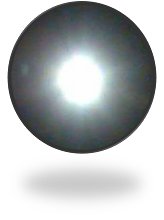If you warn them and they keep on sinning and refuse to repent, they will die in their sins. But you will have saved your life because you did what you were told to do. If good people turn bad and don't listen to my warning, they will die. If you did not warn them of the consequences, then they will die in their sins. Their previous good deeds won't help them, and I will hold you responsible, demanding your blood for theirs. But if you warn them and they repent, they will live, and you will have saved your own life, too. . . Some of them will listen, but some will ignore you, for they are rebels.
For I was hungry, and you didn't feed me. I was thirsty, and you didn't give me anything to drink. 43 I was a stranger, and you didn't invite me into your home. I was naked, and you gave me no clothing. I was sick and in prison, and you didn't visit me.' 44 "Then they will reply, 'Lord, when did we ever see you hungry or thirsty or a stranger or naked or sick or in prison, and not help you?' 45 And he will answer, 'I assure you, when you refused to help the least of these my brothers and sisters, you were refusing to help me.'
Self-doubting prophecy
For nearly five years ago today, we have been goading the Philippine Atmospheric, Geophysical and Astronomical Services Administration (PAGASA) to enhance its satellite capability instead of simply getting hand-me-down issuances from UN OOSA (United Nations Outer Space Affairs and the NOAA (United States National Oceanic and Atmospheric Administration) and the other geospatial information and intelligence agencies all over the world.
At a certain point in time around the period of the occurrence of the devastation by tropical cyclone Ketsana (Ondoy) in the Philippines, the PAGASA was clamoring for the purchase and installation of its doppler radar system, an outmoded and unreliable system for weather forecasting.
In 2010, all throughout the government circuit, the company of Mr. Philip King called AAA, went on a lecture-presentation effort to sell the sensing and image capture technology developed by a Malaysian scientist and technology specialist who was also engaged in a similar high technology, extensive venture for the government of Canada, among other countries.
Had the Department of Science and Technology considered using a network of sensing stations with clear-photo capture capability on a 1-camera-per-station (or possibly a cluster of cameras), weather forecasting in the country, aided with charity hand-outs from NOAA, UNOOSA, the European Union, among other satellite capable agencies, will definitely be more precise at the same time vivid and viewable in real time. More > >
At a certain point in time around the period of the occurrence of the devastation by tropical cyclone Ketsana (Ondoy) in the Philippines, the PAGASA was clamoring for the purchase and installation of its doppler radar system, an outmoded and unreliable system for weather forecasting.
In 2010, all throughout the government circuit, the company of Mr. Philip King called AAA, went on a lecture-presentation effort to sell the sensing and image capture technology developed by a Malaysian scientist and technology specialist who was also engaged in a similar high technology, extensive venture for the government of Canada, among other countries.
Had the Department of Science and Technology considered using a network of sensing stations with clear-photo capture capability on a 1-camera-per-station (or possibly a cluster of cameras), weather forecasting in the country, aided with charity hand-outs from NOAA, UNOOSA, the European Union, among other satellite capable agencies, will definitely be more precise at the same time vivid and viewable in real time. More > >
